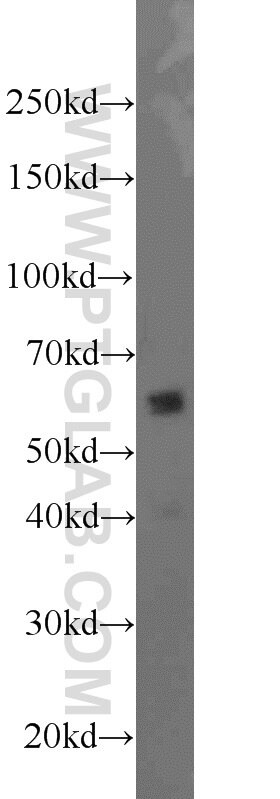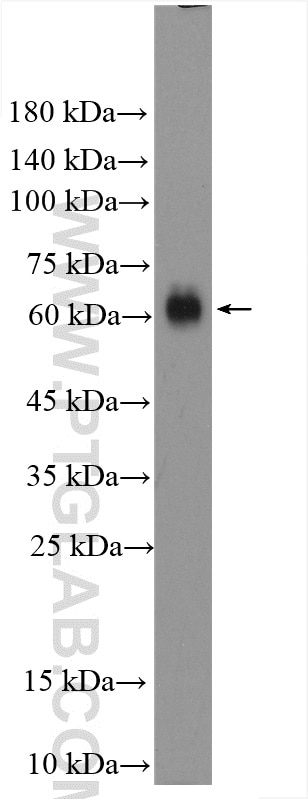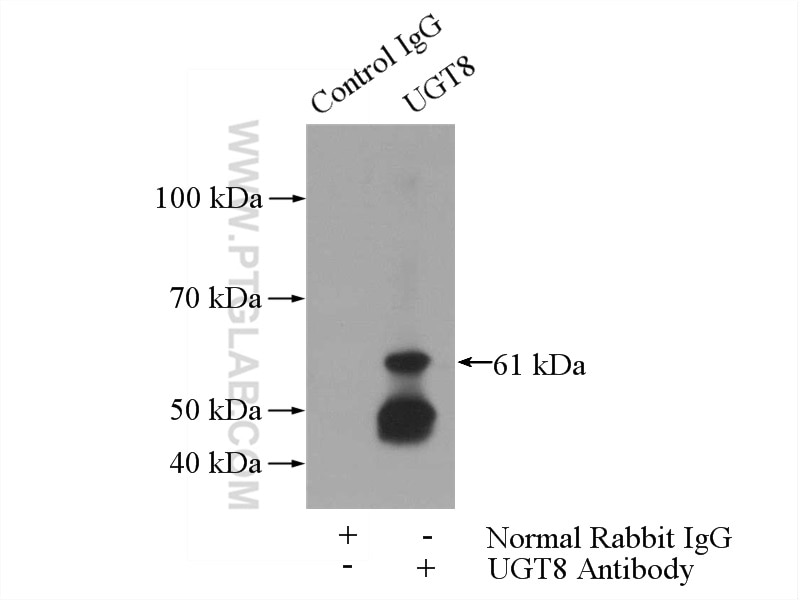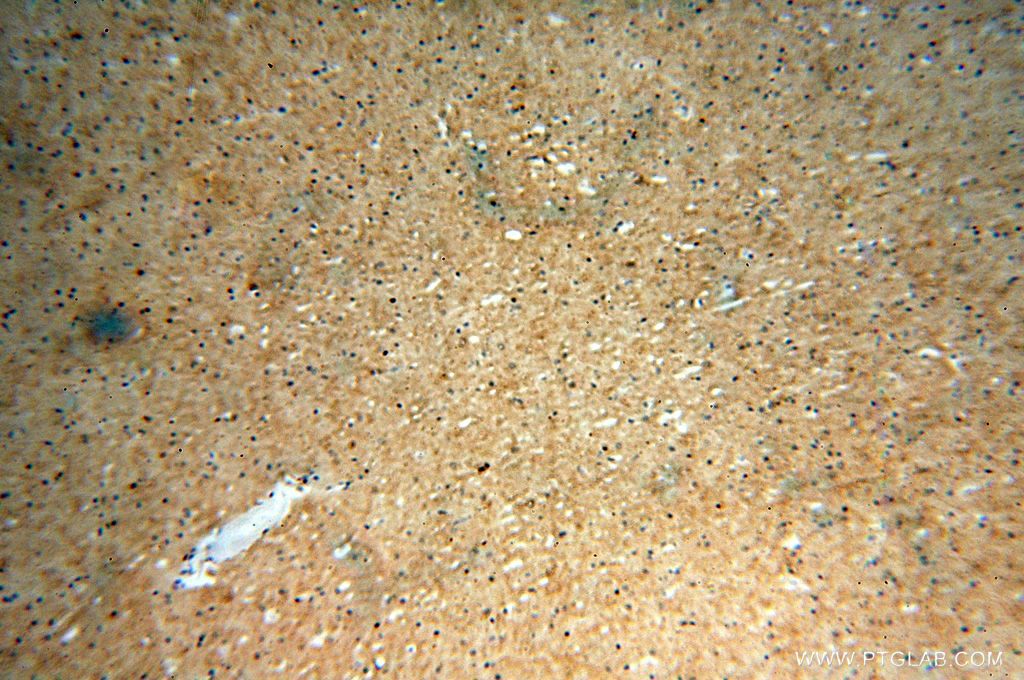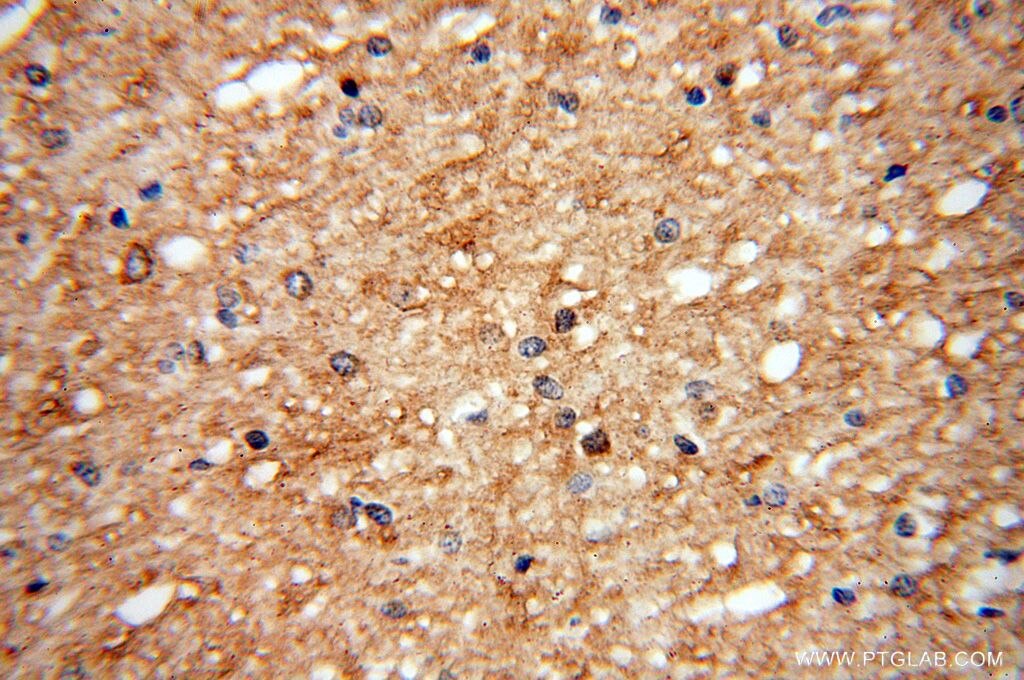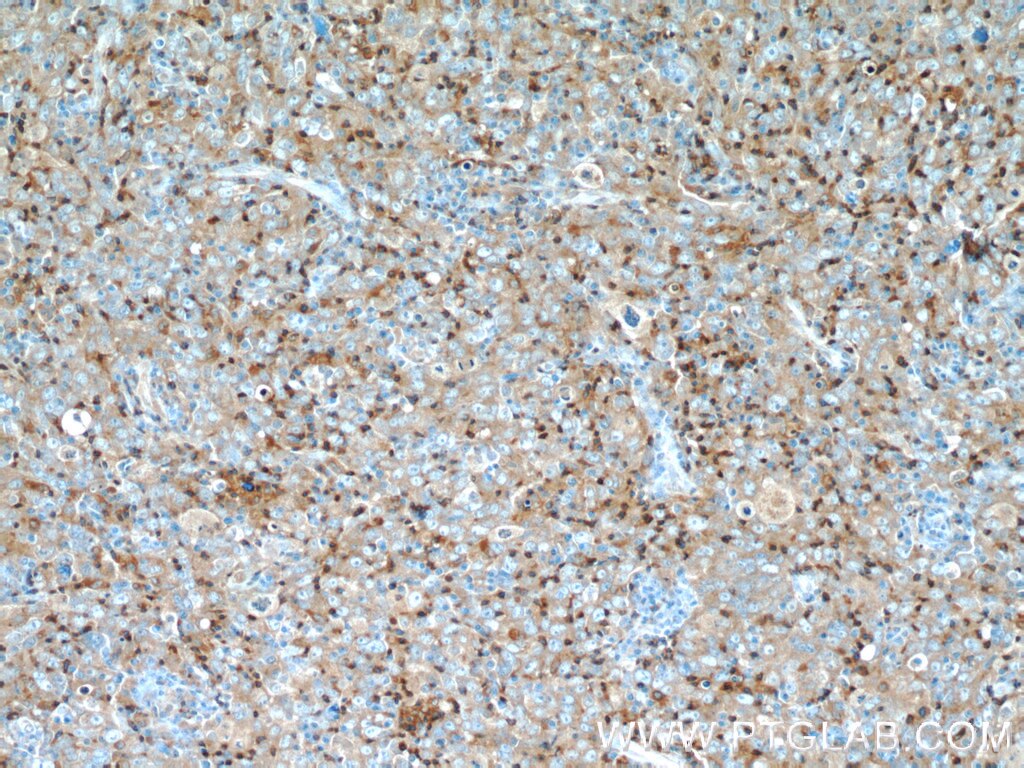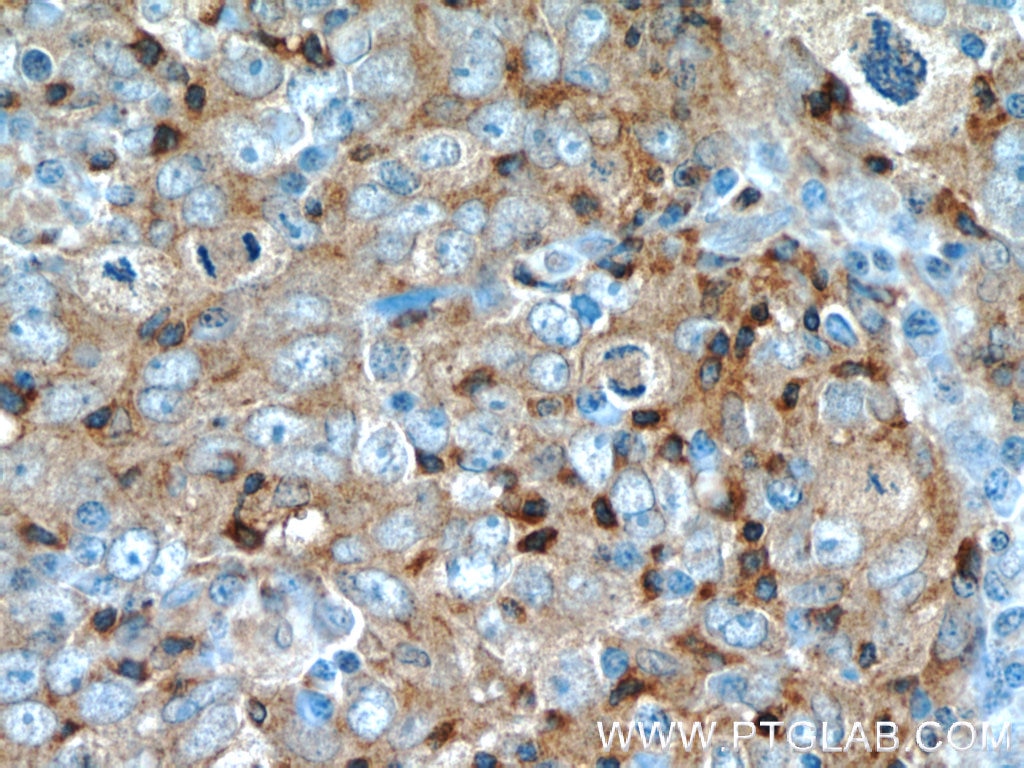- Phare
- Validé par KD/KO
Anticorps Polyclonal de lapin anti-UGT8
UGT8 Polyclonal Antibody for WB, IHC, IP, ELISA
Hôte / Isotype
Lapin / IgG
Réactivité testée
Humain, rat, souris
Applications
WB, IHC, IF, IP, ELISA
Conjugaison
Non conjugué
N° de cat : 17982-1-AP
Synonymes
Galerie de données de validation
Applications testées
| Résultats positifs en WB | tissu cérébral de rat, |
| Résultats positifs en IP | tissu cérébral de rat |
| Résultats positifs en IHC | tissu cérébral humain, tissu de cancer du sein humain il est suggéré de démasquer l'antigène avec un tampon de TE buffer pH 9.0; (*) À défaut, 'le démasquage de l'antigène peut être 'effectué avec un tampon citrate pH 6,0. |
Dilution recommandée
| Application | Dilution |
|---|---|
| Western Blot (WB) | WB : 1:500-1:2000 |
| Immunoprécipitation (IP) | IP : 0.5-4.0 ug for 1.0-3.0 mg of total protein lysate |
| Immunohistochimie (IHC) | IHC : 1:20-1:200 |
| It is recommended that this reagent should be titrated in each testing system to obtain optimal results. | |
| Sample-dependent, check data in validation data gallery | |
Applications publiées
| KD/KO | See 1 publications below |
| WB | See 9 publications below |
| IHC | See 6 publications below |
| IF | See 1 publications below |
Informations sur le produit
17982-1-AP cible UGT8 dans les applications de WB, IHC, IF, IP, ELISA et montre une réactivité avec des échantillons Humain, rat, souris
| Réactivité | Humain, rat, souris |
| Réactivité citée | rat, Humain, souris |
| Hôte / Isotype | Lapin / IgG |
| Clonalité | Polyclonal |
| Type | Anticorps |
| Immunogène | UGT8 Protéine recombinante Ag12393 |
| Nom complet | UDP glycosyltransferase 8 |
| Masse moléculaire calculée | 541 aa, 61 kDa |
| Poids moléculaire observé | 61 kDa |
| Numéro d’acquisition GenBank | BC075069 |
| Symbole du gène | UGT8 |
| Identification du gène (NCBI) | 7368 |
| Conjugaison | Non conjugué |
| Forme | Liquide |
| Méthode de purification | Purification par affinité contre l'antigène |
| Tampon de stockage | PBS with 0.02% sodium azide and 50% glycerol |
| Conditions de stockage | Stocker à -20°C. Stable pendant un an après l'expédition. L'aliquotage n'est pas nécessaire pour le stockage à -20oC Les 20ul contiennent 0,1% de BSA. |
Informations générales
UGT8, also known as galacotosylceramide synthase or CGT (ceramide galactosyltransferase), is a key enzyme for galacotosylceramide (GalCer) biosynthesis. It is an ER transmembrane protein and has limited tissue distribution, with predominance in Schwann cells, oligodendrocytes, kidneys, testes, and intestine. UGT8 is highly enriched in myelin in the central nervous system. Its expression levels are strongly associated with histological typing in human oligodendrogliomas and astrocytomas; can be used as molecular marker to distinguish these tumors. Higher UGT8 levels had also been linked to metastatic properties of cancer cells. This antibody specifically recognizes the endogenous UGT8.
Protocole
| Product Specific Protocols | |
|---|---|
| WB protocol for UGT8 antibody 17982-1-AP | Download protocol |
| IHC protocol for UGT8 antibody 17982-1-AP | Download protocol |
| IP protocol for UGT8 antibody 17982-1-AP | Download protocol |
| Standard Protocols | |
|---|---|
| Click here to view our Standard Protocols |
Publications
| Species | Application | Title |
|---|---|---|
Cell Death Differ UGT8 mediated sulfatide synthesis modulates BAX localization and dictates apoptosis sensitivity of colorectal cancer | ||
J Exp Med Inhibition of UGT8 suppresses basal-like breast cancer progression by attenuating sulfatide-αVβ5 axis.
| ||
Mol Cell Proteomics Metabolic Enzyme Alterations and Astrocyte Dysfunction in a Murine Model of Alexander Disease With Severe Reactive Gliosis. | ||
Mol Pharmacol Circular RNAs of UDP-Glycosyltransferase (UGT) Genes Expand the Complexity and Diversity of the UGT Transcriptome. | ||
Biosci Rep Uronic acid metabolic process-related gene expression-based signature predicts overall survival of glioma. | ||
Cancer Chemother Pharmacol Evaluation of resveratrol sensitivities and metabolic patterns in human and rat glioblastoma cells. |
